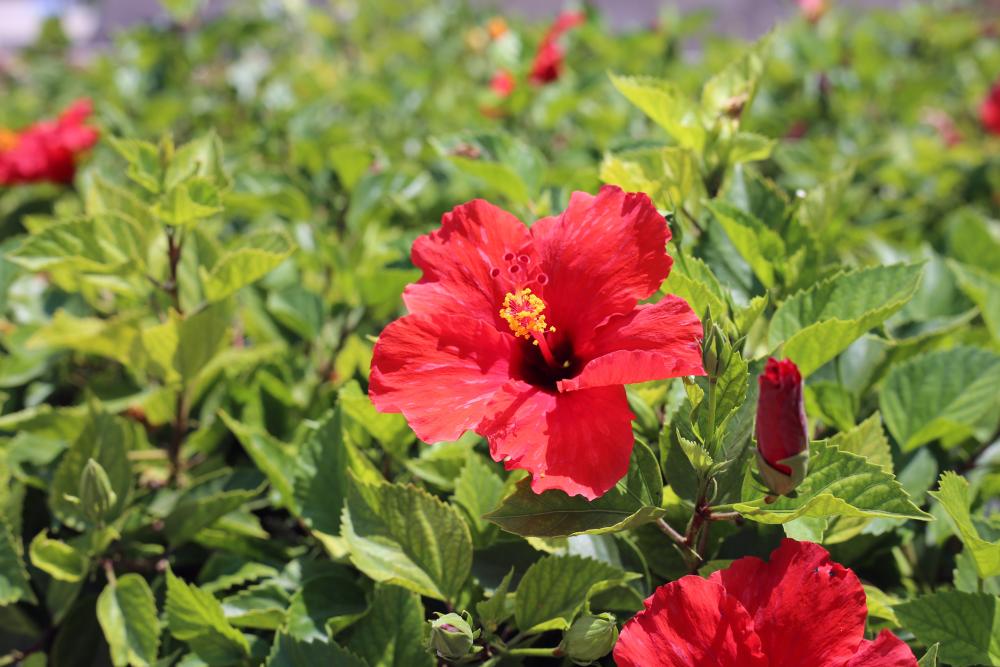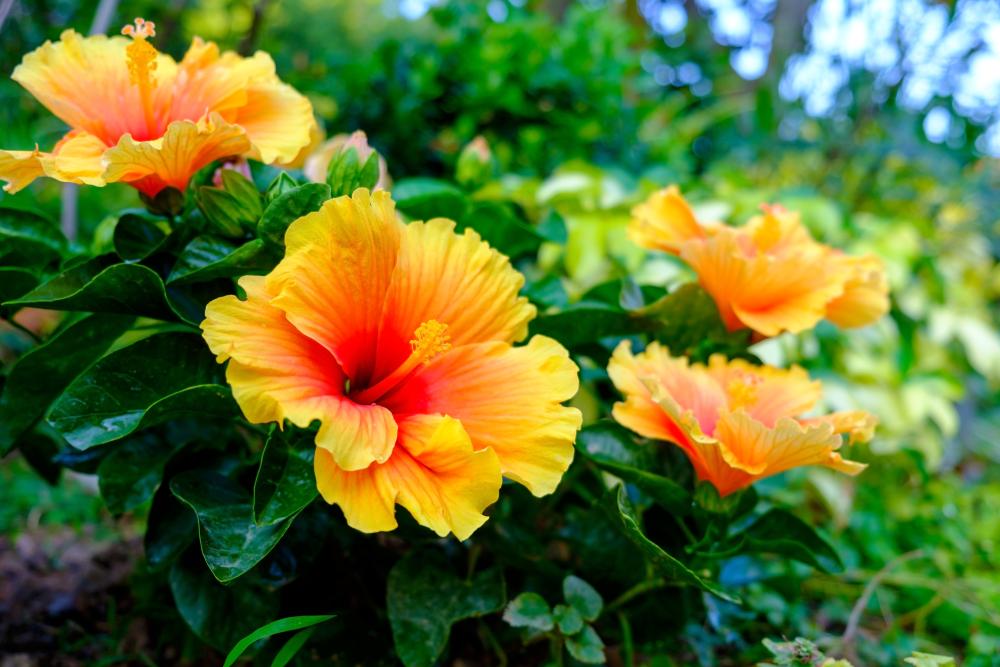8 Reasons Your Hibiscus’ Leaves Are Turning Yellow
The Hibiscus is a flowering type that belongs to the Malvaceae family. Right from where it’s native to, the plant prefers a tropical setting where the environment is a little more humid. And that makes it a perfect choice for gardeners living in tropical counties such as California or Florida. However, while the blooms from this tropical plant often create a healing ambiance on any indoor or outdoor space, it’s likely to react to stress from environmental changes in varying ways.
As a result, the leaves might start turning yellow. This guide explains some of the issues that could cause the leaves of your Hibiscus plant to experience color distortion. Let’s check them out.
Are the Temperature Levels Suitable?
Intense heat from the sun will cause the leaves of your Hibiscus plant to turn yellow because it needs a humid environment around it when the conditions are warm and dry. So, you’ll need to water this flowering plant more often during summer. It’s best to mimic the tropical conditions the plant is accustomed to. When the plant stays dry for too long, you’ll start to spot a few yellow leaves on the foliage. Some will go the extra mile to fall off. Heat stress is hard to repair, so you want to cool your Hibiscus off by frequently misting it when the temperatures hit a record high.
On the other hand, it’s still worth noting that this member of the Malvaceae family isn’t frost-hardy. Cold weather will equally harm your plant’s overall appearance. If your Hibiscus plants grow inside containers, moving them indoors during winter would significantly save the situation. Growing your Hibiscus plant inside a container would make moving it indoors way more manageable when the temperatures are extremely low.
Lack of Essential Nutrients
If your Hibiscus plants are growing close to each other, there are chances they will compete for nutrients. Nutrient deficiency is a probable cause for the yellowing of leaves. Leaves won’t fall off, but they might remain yellow for the entire growing season. In most instances, the soil amendment might not be rich enough to provide all the essential nutrients to keep your Hibiscus radiant and healthy throughout the seasons.
Sometimes, the yellowing of leaves is a common sign of iron chlorosis. Apart from feeding your Hibiscus with the requisite nutrients, you also want to consider replacing the old soil with one that’s rich in organic matter. UsingEpsom salt isan organic remedy that also helps with chlorophyll production. When using synthetic fertilizers, make sure to dilute them at half their strength because this tropical plant only needs to be fed lightly.
Improper Watering Patterns
The effects of overwatering can sometimes go overboard. If the roots are continually sitting in soggy soil for too long, the leaves might start turning yellow. When there’s a heatwave, you want to water the plants more often since the soil will dry up much faster. After all, the Hibiscus is a tropical plant and is accustomed to humid conditions. During winter, cut back the watering intervals drastically.
Light Conditions
Where you position, the growing medium is essential when it comes to light conditions. If your Hibiscus has rich foliage full of leaves, it will need more access to sunlight. Crowded leaves desperately compete in search of light if the location of the Hibiscus is a bit dim. You can choose to prune a few of them. When looking out for the sunniest spot inside your home, it’s best to make some adjustments so the plant can receive some shade as well.
Any sun exposure beyond 6 hours will highly likely burn the leaves, so it’s best to strike a balance. Hibiscus leaves experiencing sunburns will have yellow marks or some white spots on them. And if there are no white spots, it’s a sign that the plant isn’t getting enough light. The condition isn’t potent enough to kill the plant but will cause it to shed some leaves over time.
Poor Drainage
How porous is the potting soil? While the Hibiscus plant prefers a humid environment, it’s prone to suffer from fungal infections if the soil structure doesn’t let out excess moisture. In addition, if the plant is becoming rootbound by the day, the leaves are likely to turn yellow. Apart from amending the potting soil with materials that would help with drainage, you also want to tweak the soil pH by making it slightly acidic. Consider repotting your root-bound Hibiscus in a larger container with enough drainage holes to let out excess moisture. Replace the old soil with a light potting mix or soilless medium.
Dormancy
During winter, the growth hormones tend to go into dormancy. Hence, this would not be the best time to feed your potted Hibiscus. You also want to cut back the watering intervals quite rapidly during this season. It’s best to note that the growing seasons for Hibiscus plants are fall, spring, and summer. Towards the end of autumn, the plant might start to shed a few leaves while some will turn yellow. The color distortion on the leaves indicates that the plant wants to go dormant.
Pest Attacks
Your Hibiscus will experience some physical symptoms after an acute pest infestation. And besides yellowing, you’ll probably see some waxy residue or unusual markings on the underside of the leaves. The condition could be caused by bugs such as spider mites or mealybugs. It’s best to check for any molted appearance on the foliage when diagnosing your Hibiscus plants.
Synthetic Pesticides
Overusing pesticides will burn the leaves of your Hibiscus plant. It’s more reason why we recommend using most synthetic pesticides at half their strength. Spraying a potent pesticide on your Hibiscus in the middle of the day when the heat waves from the sun are at their peak would expose the leaves to problems. If the leaves start experiencing stress due to excessive use of pesticides, then it would be best to prune the affected leaves. Pruning helps stimulate the growth hormones when the plant is under a stressful condition.


